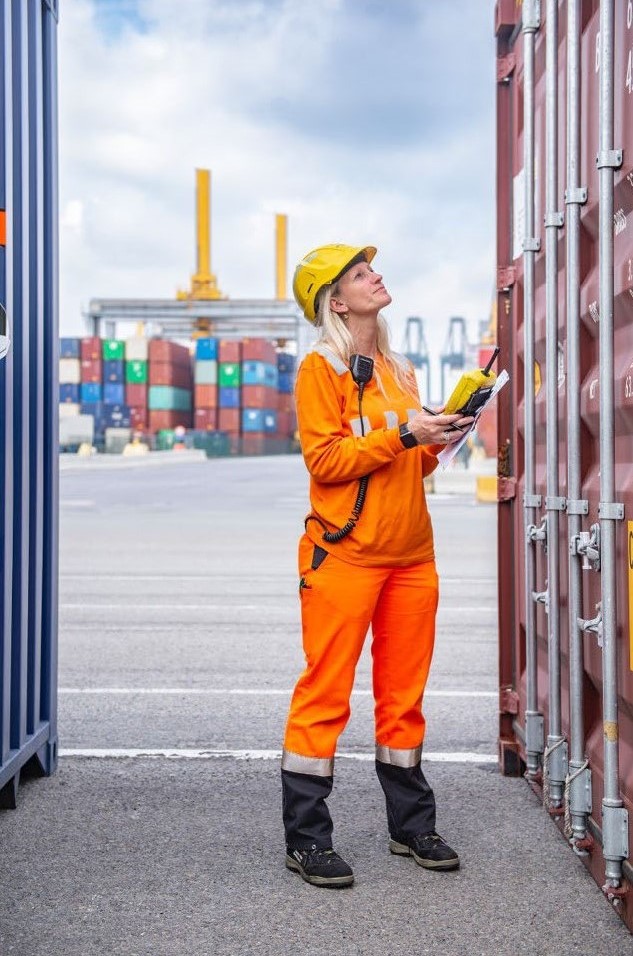╔
The inclusion of women in European ports, which have been historically male-dominated environments, is increasingly recognized as essential for fostering diversity, gender equality, and innovation within the maritime sector. While progress has been made in recent years, there are still challenges to overcome to ensure equal opportunities for women in port operations across Europe [1].
Most European countries have implemented legislation aimed at promoting gender equality and preventing discrimination in the workplace. This includes laws prohibiting gender-based discrimination in hiring, promotion, and pay, as well as measures to support work-life balance, such as parental leave policies.
But many seaport terminals operators, members of FEPORT, are going beyond law as they believe that diversity and inclusion represent an opportunity to embrace the challenges of the 4th industrial revolution and become even more competitive.
Historically, ports involved manual handling in general cargo terminals, posing physical challenges for workers. Today’s ports feature diverse terminals, including containers, dry bulk, liquid bulk, RoRo, etc. operated with modern equipment and digitized control systems.
The green transition in European ports is driving the emergence of new jobs, the creation of new profiles, and intensifying the race for talent. As ports transition towards sustainability and adopt greener practices, they require skilled professionals with expertise in various areas related to environmental management, renewable energy, digitalization, and sustainable logistics.
With the adoption of green technologies such as renewable energy systems, electric vehicles, and energy-efficient infrastructure, there is a growing demand for specialists in green technology implementation and management. These professionals design, implement, and maintain sustainable solutions within port operations.
Developing a skilled workforce is essential for attracting and retaining private investments in ports. Investing in education, vocational training, and workforce development programs tailored to the needs of the maritime industry can enhance the attractiveness of port locations for investors.
FEPORT Members invest in training and development programs to equip workers with the necessary skills, knowledge, and certifications required for their roles.
Many private port companies prioritize work-life balance and offer flexible work arrangements, shift scheduling, and leave policies that accommodate the needs of their employees. Workers can balance their professional responsibilities with personal commitments, family time, and leisure activities.
Encouraging women to pursue careers in ports is an objective for private port companies and terminals as diversity in the workforce helps break down barriers and stereotypes, paving the way for future generations.
Women working in a port area. (© DP World).

They believe that diverse teams always bring different perspectives, ideas, and approaches, leading to better problem-solving and decision-making.
Moreover, by tapping into a broader talent pool, FEPORT members know that they can access a wider range of skills and expertise. This can help address skill shortages and improve overall efficiency and effectiveness in port operations.
Private port operators and terminals are also convinced that increasing women’s participation in ports, can contribute to economic growth and development by leveraging the full potential of the workforce. This, in turn, can lead to increased productivity and competitiveness in the global market.
Promoting gender equality and diversity aligns with principles of social responsibility and sustainable development. Ports that prioritize inclusivity are seen as progressive and socially responsible entities, which can enhance their reputation and stakeholder relationships.
To achieve greater inclusion of women in ports, more efforts are needed at various levels, including educational initiatives, mentorship programs, and creating a supportive work environment that values diversity and equality.
Additionally, addressing systemic barriers and biases is essential to ensure equal opportunities for all individuals regardless of gender. This objective must become a priority in the framework of the work of the European Sectoral Social Dialogue Committee for Ports as both employers’ and employees’ commitment to set ambitious objectives is needed.
Encouraging women to pursue leadership roles in port management and governance is essential for achieving gender balance in the industry. This may involve targeted efforts to identify and support women with leadership potential, as well as initiatives to address barriers to advancement, such as unconscious bias and lack of representation on decision-making bodies.
Regular monitoring and reporting on progress towards gender equality goals is essential. This may involve collecting data on the representation of women in port operations, tracking indicators such as recruitment, retention, and promotion rates, and conducting gender impact assessments of policies and initiatives. By addressing these factors and implementing targeted strategies, European ports can become real examples for the rest of the world.
HEAD IMAGE | The new Multipurpose Terminal in the Port of Trieste. (© HHLA PLT Italy).
╝
NOTE
[1] As also highlighted in the Commission’s Recommendation on means to address the impacts of automation and digitalization on the transport workforce, women constitute only 2% of the maritime sector workforce.